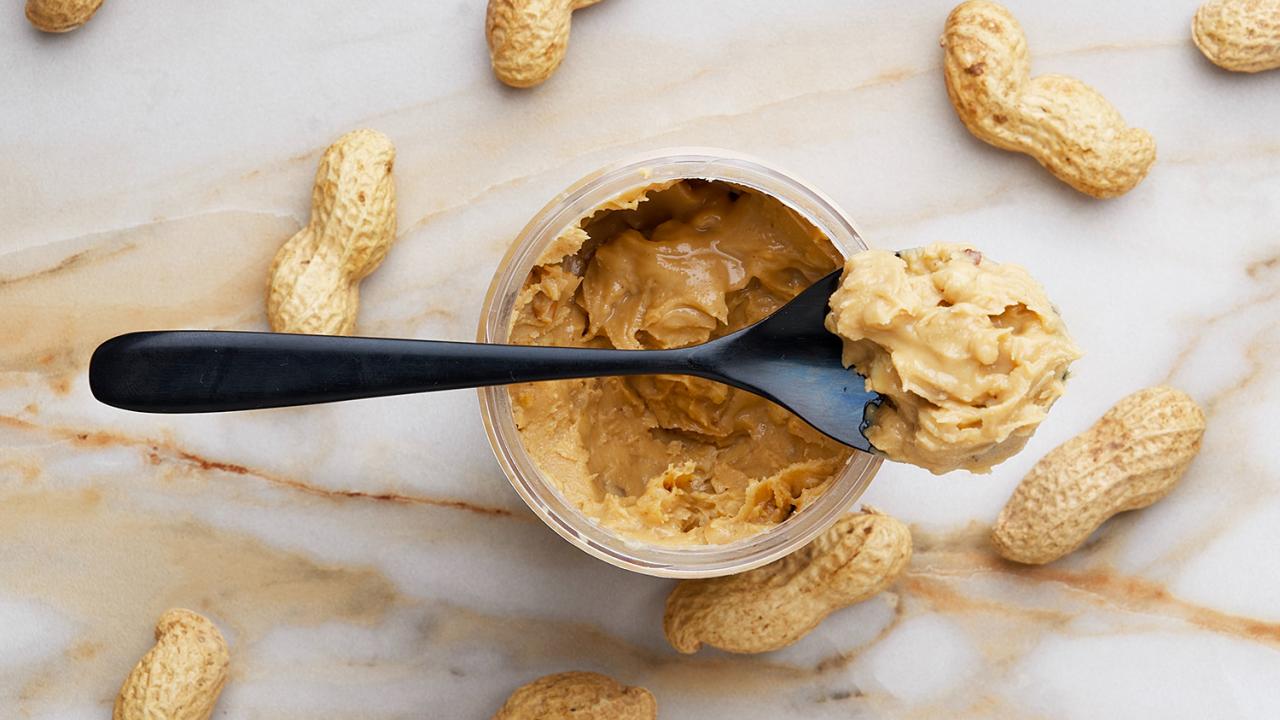
Choosing a Peanut Butter
Peanut butter is a staple many homes. Barring a food allergy, keeping it readily available creates an easy opportunity for a quick meal or satisfying snack.
Although a legume, peanuts are included as a “nut” because they are used as nuts are. They are great for snacking on out of hand, including in recipes and for the good ole peanut butter and jelly sandwich. Peanuts, and most other nuts, are a great source of plant-based protein. Containing 7 gm protein in a 2 Tbsp serving, peanuts contain one of the highest amounts of protein of all the nuts. Additionally, the fat in most nuts tends to be mono- and polyunsaturated. These fats are known to decrease risk for many chronic diseases. Nut butters also contain fiber, just one more reason to keep them around!
With a wide selection available on the supermarket shelf, is there anything in particular to look for when selecting a nut butter for your pantry? The USDA requires products labeled ‘Peanut Butter’ to contain 90% peanuts. Peanuts will always be the first ingredient. 10% of the product can consist of other ingredients. Artificial flavorings, artificial sweeteners, color and additives or chemical preservatives are not allowed in peanut butter. But, there are a few things to watch for on the label.
When nuts are ground for butter there is a natural tendency for separation –the oil rises to the top. This requires stirring after opening and refrigerating, as unsaturated fats go rancid quickly. Since this isn’t necessarily desirable, the oil gets all over your hands and the jar, and the butter gets hard in the refrigerator, we have created shelf-stable, emulsified jars of peanut butter. Beware, however! These products often have added saturated fats and other ingredients you may rather avoid. To solidify and stabilize (no stirring required) the unsaturated fats in peanut butter, manufacturers may add another oil, sometimes palm oil or a hydrogenated oil, both of which contain saturated fat. Saturated fat intake should be limited to 10% of calories in a day (about 10 g per 1000 calories consumed). Saturated fat tends to increase the bad fat (LDL) in blood which is a risk for cardiovascular disease.
Some peanut butters are sweetened. Consumers tend to prefer sweeter tastes and food companies compete for sales. Companies have noticed that some consumers prefer sweeter products, consequently sugar may be added. If you are trying to avoid added sugar, a recommendation from the 2015 Dietary Guidelines for Americans, be sure to read the label.

Product #1 (left): Peanuts, contains 1% or less of salt.
Product #2 (right): Roasted peanuts, corn syrup solids, sugar, soy protein, salt, hydrogenated vegetable oils (cottonseed, soybean and rapeseed) to prevent separation, mono and diglycerides, palm oil, minerals (magnesium oxide, xinc oxide, ferric orthophosphate, coper sulfate) vitamins (niacinamide, pyridoxine hydrochloride, folic acid).
Which product you choose depends on what you’re looking for. There is similar fiber and protein in the two products, but 75% more sugar in product #2. It appears as though there is less fat in the second product likely because it is diluted with the extra added ingredients and sugars. As a dietitian, I recommend staying as close to the way the product comes from the earth. I would choose product #1.